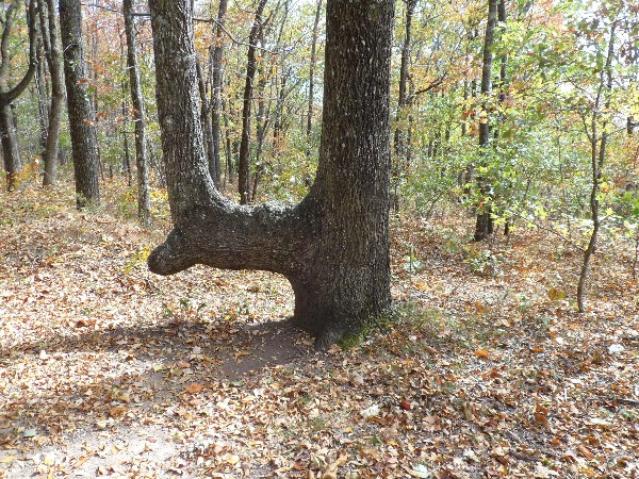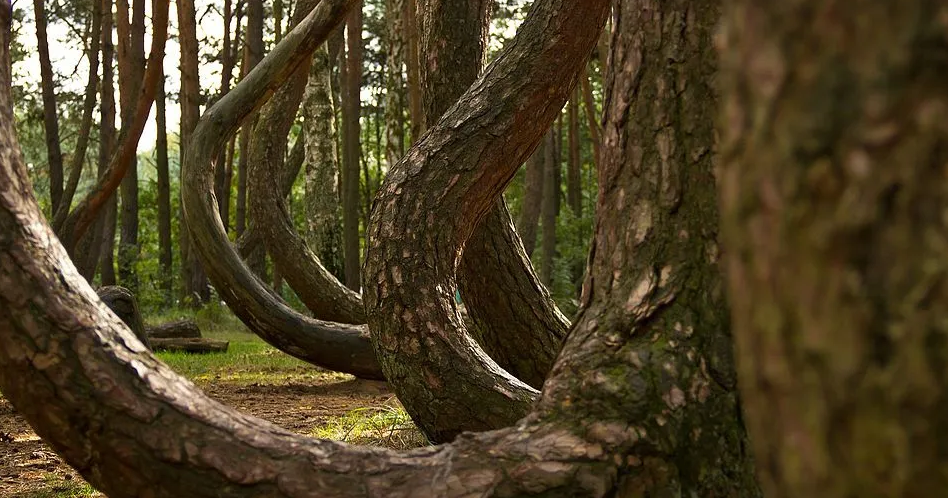In today’s world, navigating through forests is simplified by modern technology like GPS and mapping applications. However, before these advancements, indigenous peoples of North America developed ingenious methods to traverse and mark extensive forested landscapes. One notable technique involved the intentional bending of young saplings to create living trail markers, commonly referred to as “trail trees” or “marker trees.”
Creation and Purpose of Trail Trees
Native Americans would select young, flexible hardwood saplings, such as white oaks, and bend them in specific directions. The saplings were secured using materials like sinew, rawhide, or vines, or sometimes weighted down with soil or stones. After about a year, once the tree maintained its bent shape, the restraints were removed, allowing the tree to continue growing with a distinctive horizontal bend or “elbow” pointing toward a particular direction. These trees served multiple purposes, including:

- Navigational Aids: They indicated safe paths through challenging terrains, guiding travelers toward essential resources like water sources, food supplies, or settlements.
- Signposts for Significant Locations: Some trail trees pointed to culturally important sites such as council circles, medicinal plant areas, or sacred spaces.
- Warnings of Potential Dangers: They could alert travelers to hazardous areas or difficult passages ahead.
The strategic placement of these trees on elevated terrains or near notable landmarks enhanced their visibility and utility as guideposts.
Distinguishing Trail Trees from Naturally Bent Trees
While natural phenomena like storms, snow loads, or soil movement can cause trees to bend, trail trees exhibit specific characteristics indicative of human modification:
- Consistent Bend Height: The bend typically occurs a few feet above the ground, leading into a horizontal section before the tree resumes vertical growth.
- Presence of a “Nose” or Knob: At the end of the bend, there’s often a protruding feature resembling a nose or knob, resulting from the tree’s response to the bending process.
- Scarring: Marks or scars may be visible where the bindings were applied to hold the tree in its bent position during its formative years.
These intentional modifications result in a uniform appearance among trail trees, distinguishing them from those altered by natural causes.

Preservation and Documentation Efforts
Recognizing the historical and cultural significance of trail trees, various organizations and researchers have undertaken efforts to identify, document, and preserve these living artifacts. For instance, the Mountain Stewards organization has mapped over a thousand trail trees across the United States, providing detailed records of their locations and conditions. Such initiatives aim to educate the public about these trees’ roles in indigenous history and ensure their protection for future generations.
Contemporary Relevance
Today, while modern navigation tools have supplanted the need for natural trail markers, trail trees stand as enduring symbols of indigenous ingenuity and their deep connection to the land. They offer valuable insights into historical travel routes, resource locations, and cultural practices. Preserving these trees not only honors the legacy of Native American traditions but also provides educational opportunities for those interested in the rich tapestry of North America’s history.
In conclusion, the bent trees found in forests across North America are more than mere natural curiosities; they are deliberate markers crafted by Native Americans to navigate and signify important locations within vast wooded landscapes. As living testaments to a time before modern conveniences, they deserve recognition, study, and preservation to keep this unique aspect of cultural heritage alive.

















